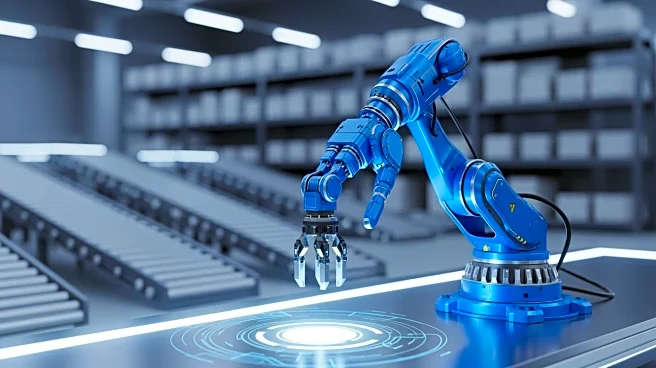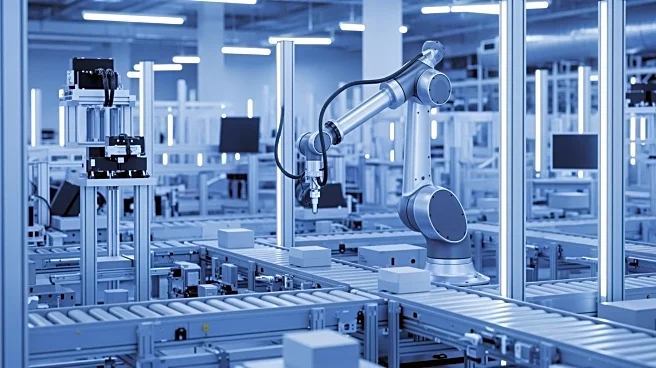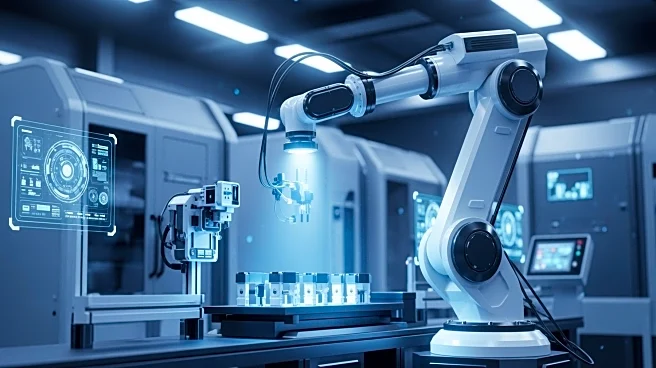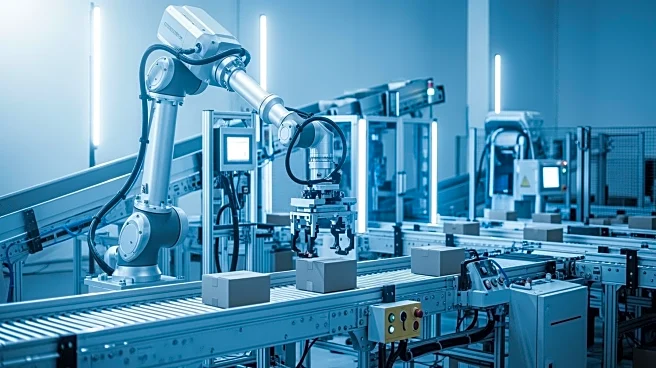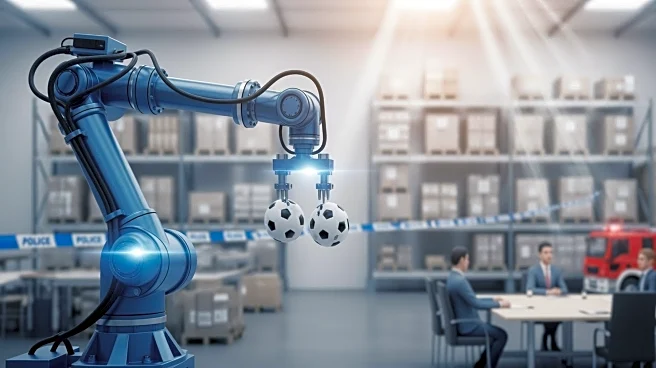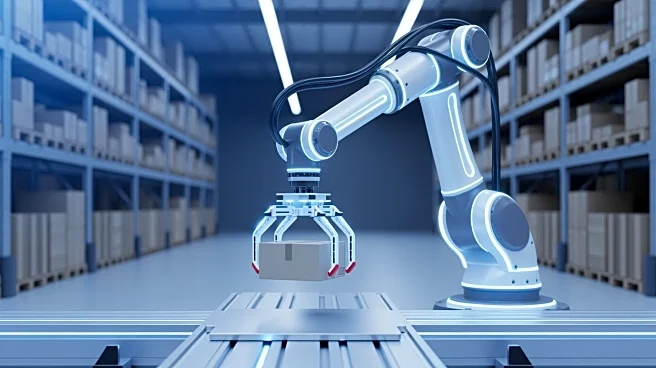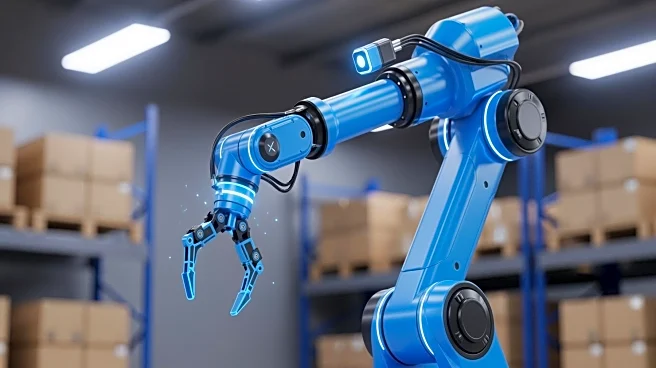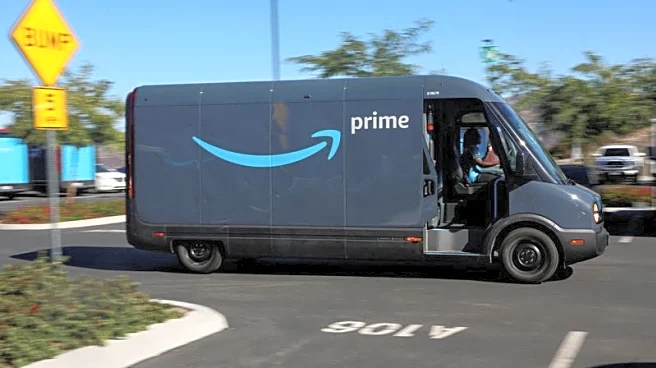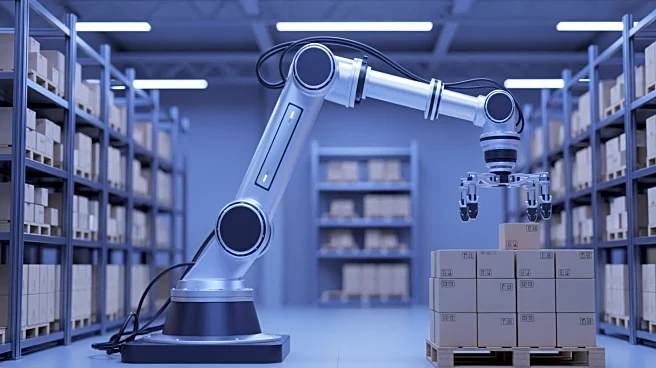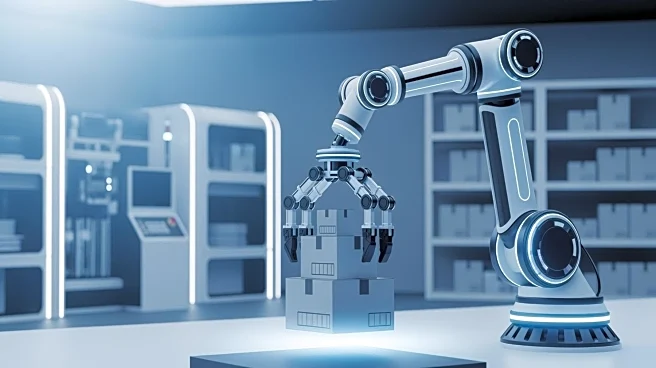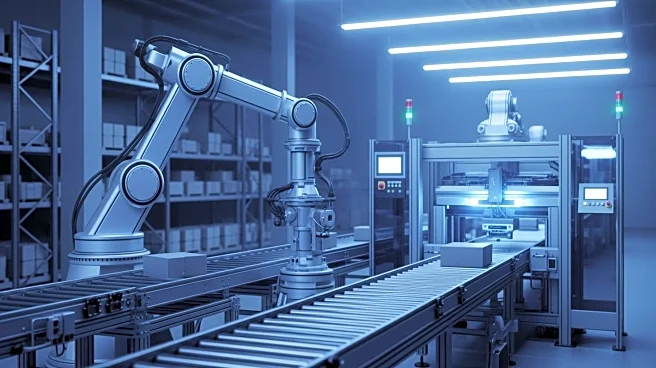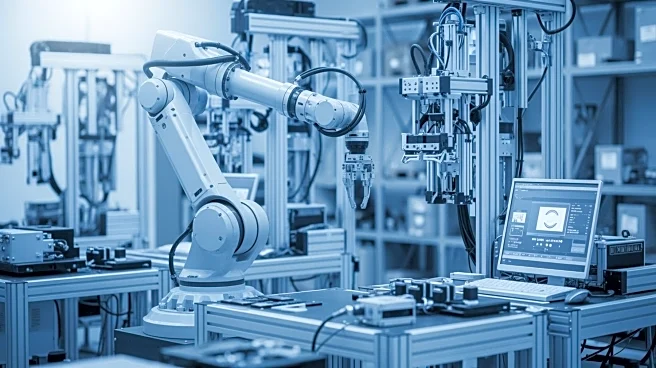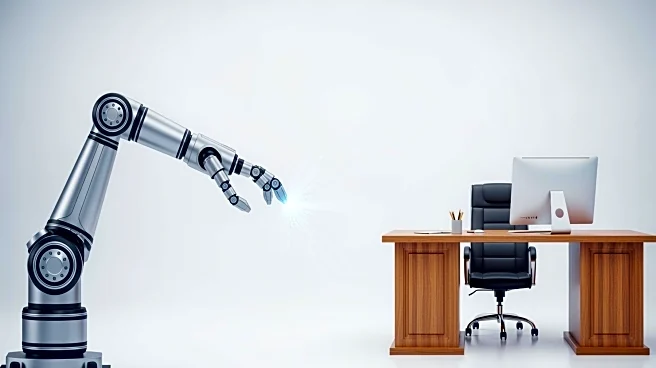What's Happening?
Amazon has introduced Blue Jay, a new robotic system designed to improve efficiency in its fulfillment centers. Blue Jay combines picking, stowing, and consolidating tasks into a single operation, significantly reducing the space and time required for
these processes. The development of Blue Jay was expedited through the use of digital twins and AI, allowing Amazon to move from concept to production in just over a year. This innovation is part of Amazon's broader strategy to enhance its logistics operations and support its workforce.
Why It's Important?
The introduction of Blue Jay represents a significant advancement in warehouse automation, potentially setting new standards for efficiency in the logistics industry. By streamlining operations, Amazon can reduce costs and improve delivery times, enhancing its competitive edge. The use of AI and digital twins in development highlights the growing role of technology in industrial innovation. For employees, Blue Jay's deployment may lead to shifts in job roles, focusing on higher-value tasks and reducing physical strain.
What's Next?
Blue Jay is currently being tested in South Carolina, with potential for wider deployment across Amazon's global network. As the technology proves successful, it may lead to further innovations in warehouse automation. Amazon's continued investment in AI and robotics suggests ongoing enhancements to its logistics capabilities. The broader industry may follow suit, adopting similar technologies to remain competitive. The impact on the workforce will be closely monitored, with potential implications for job design and employee training.
